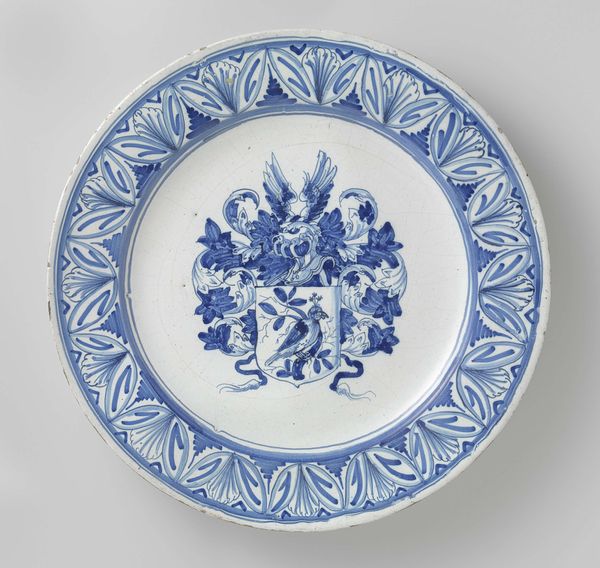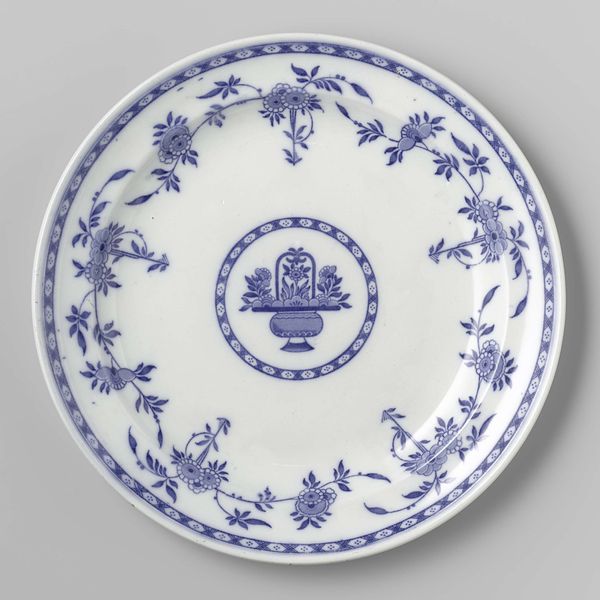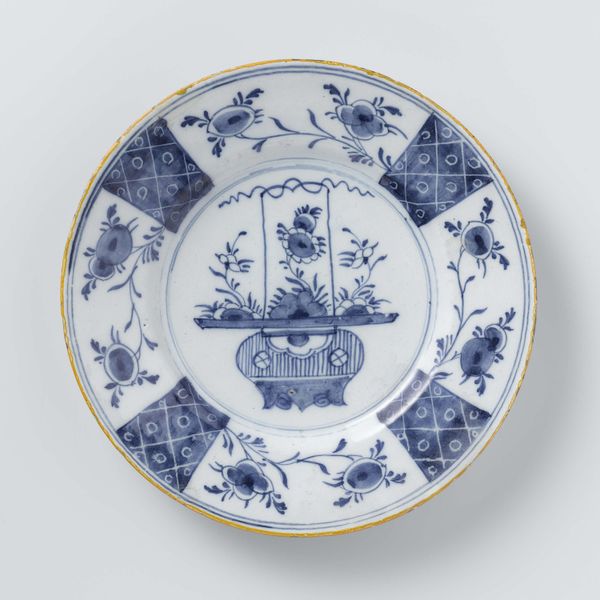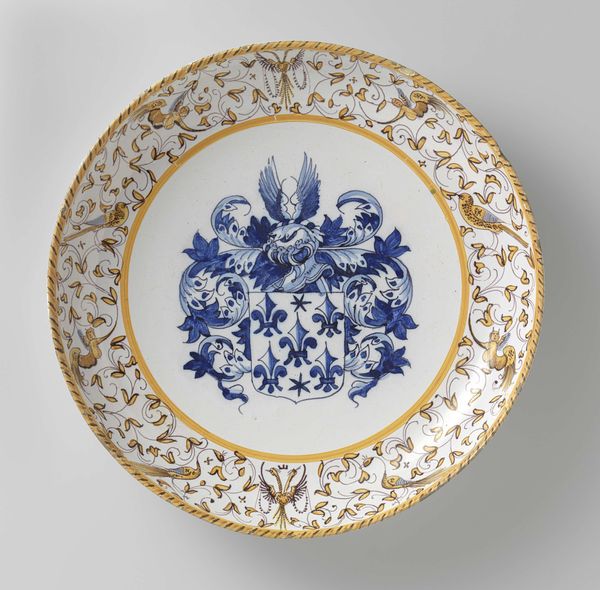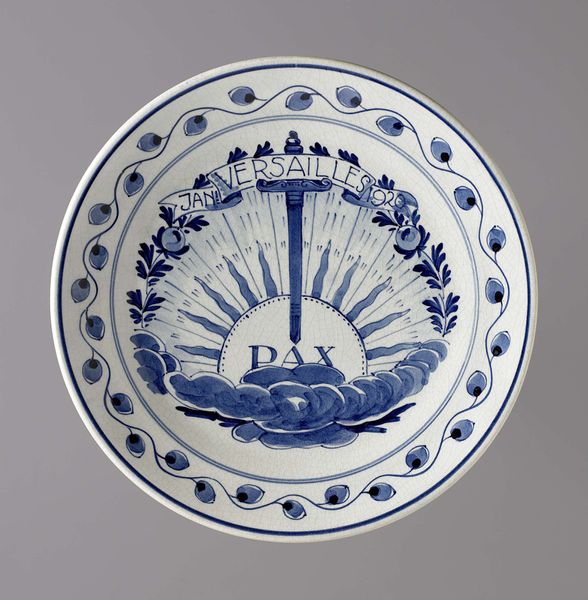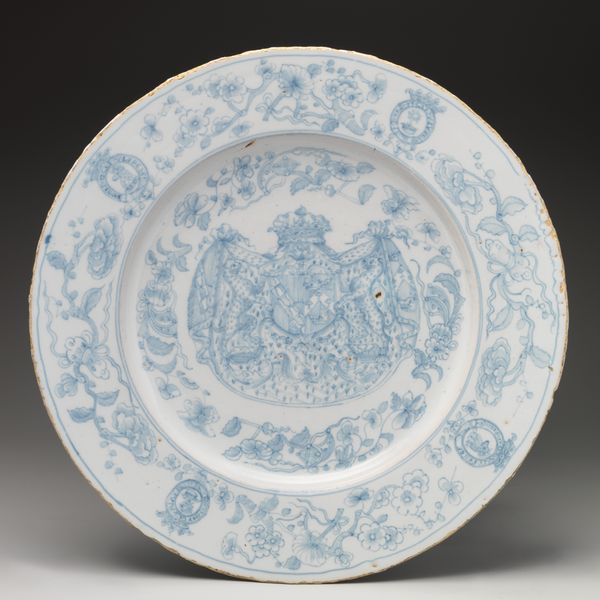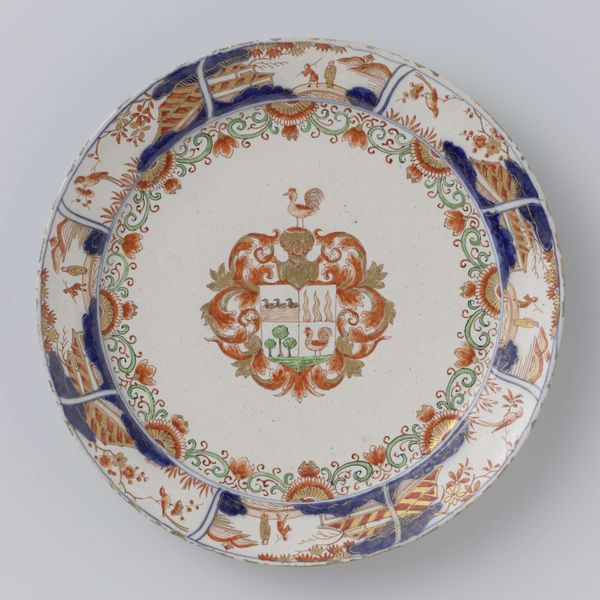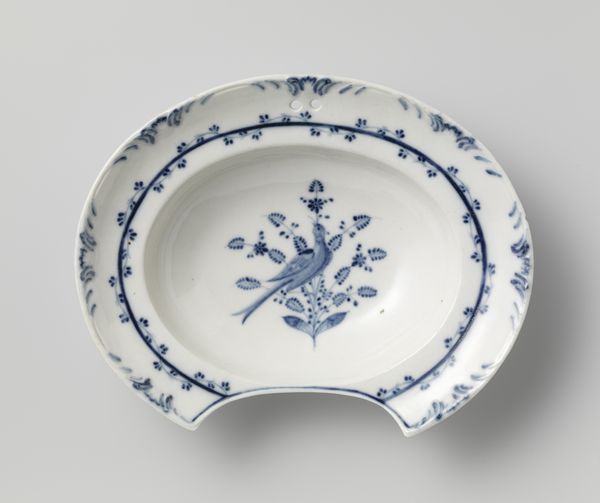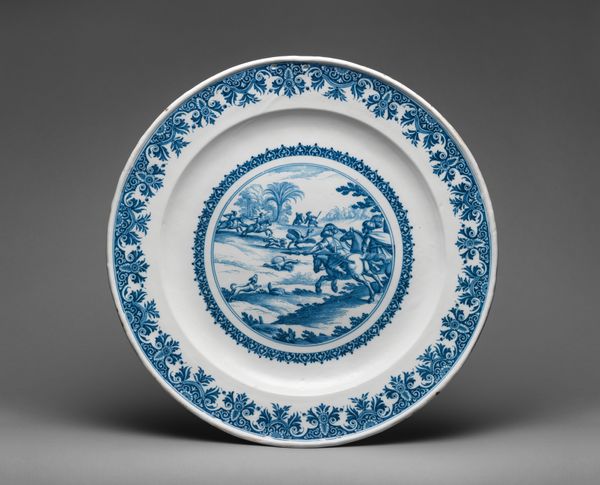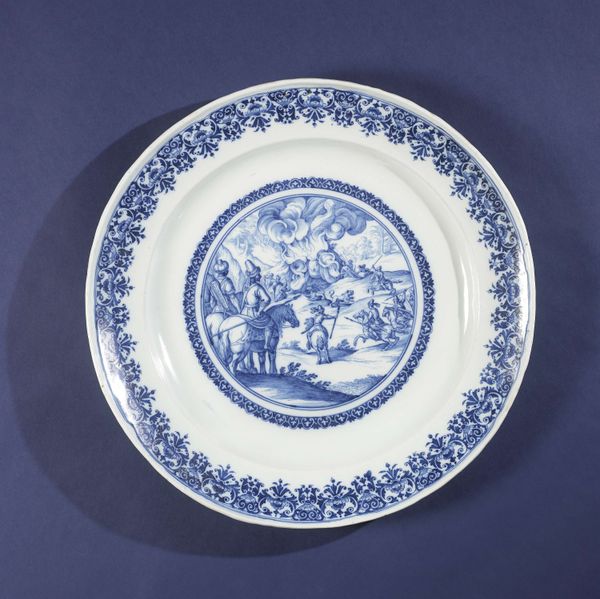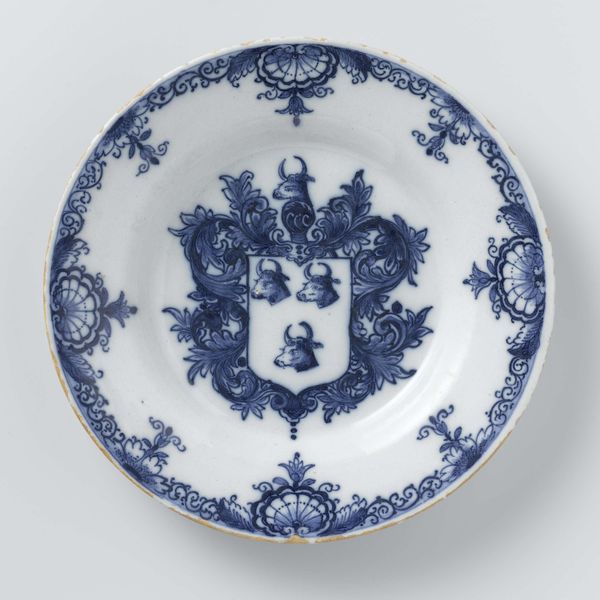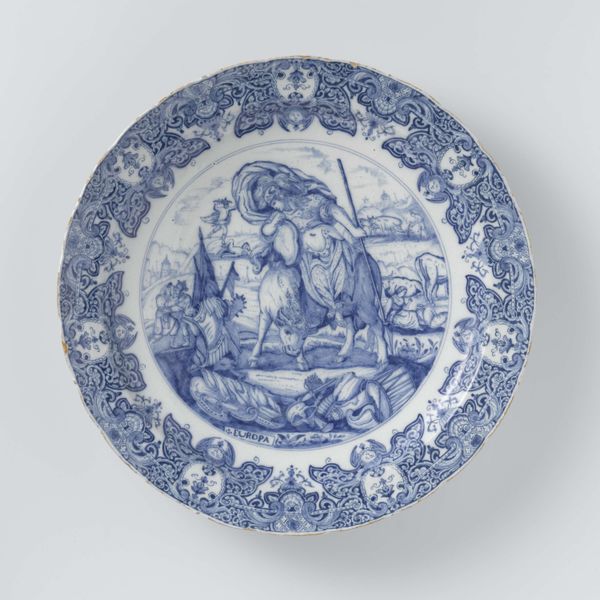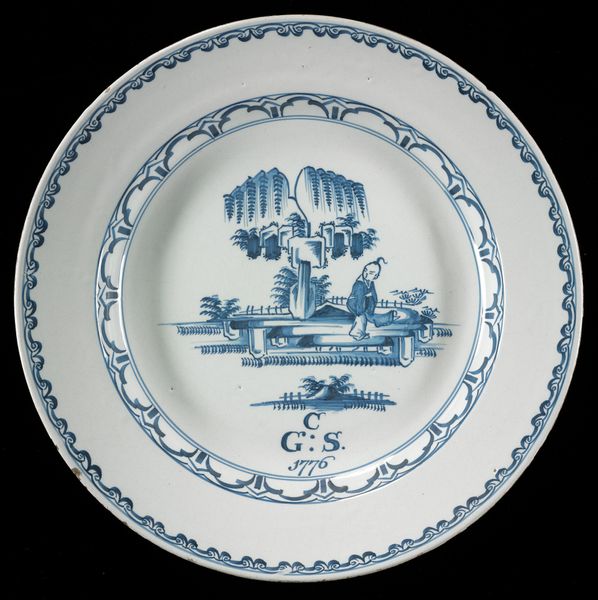
ceramic, earthenware
#
ceramic
#
earthenware
#
ceramic
#
decorative-art
Dimensions: height 2.8 cm, diameter 23 cm, diameter 12 cm, weight 377 gr
Copyright: Rijks Museum: Open Domain
Editor: Here we have a plate with the arms of the De Jonge family, created around 1730 to 1740. It's earthenware, a type of ceramic, and the central crest is quite striking, surrounded by delicate floral patterns. The overall design feels formal, almost like a statement. What do you see in this piece beyond its decorative qualities? Curator: It's a fascinating example of how material culture intersects with power and identity. Consider the De Jonge family: this plate isn’t just tableware, it's a declaration of status in 18th-century society. Family crests served as emblems of lineage, profession, and alliance. The artistry reflects cultural values of its era, suggesting wealth and access to fine craftsmanship, wouldn't you agree? Editor: Definitely. I was thinking about the blue and white pattern surrounding the crest. Does that hold any specific meaning, or is it purely ornamental? Curator: It's crucial to examine those seemingly decorative elements in connection with historical context. The blue and white aesthetic draws from Chinese porcelain which had become wildly popular in Europe. What seems like mere ornament could also point to a desire for global integration. Does the incorporation of these elements speak to a narrative of appropriation? Or does it reflect how cultural exchange took place, further legitimizing one’s social status? Editor: That makes me think about how even everyday objects can become charged with social and political meaning. So, what's your takeaway from the plate? Curator: It is not just a plate; it is a window into a past where even dining rituals reflected a complex interplay of identity, status, and cultural exchange, reminding us of the many narratives that a single object can embody.
Comments
No comments
Be the first to comment and join the conversation on the ultimate creative platform.
